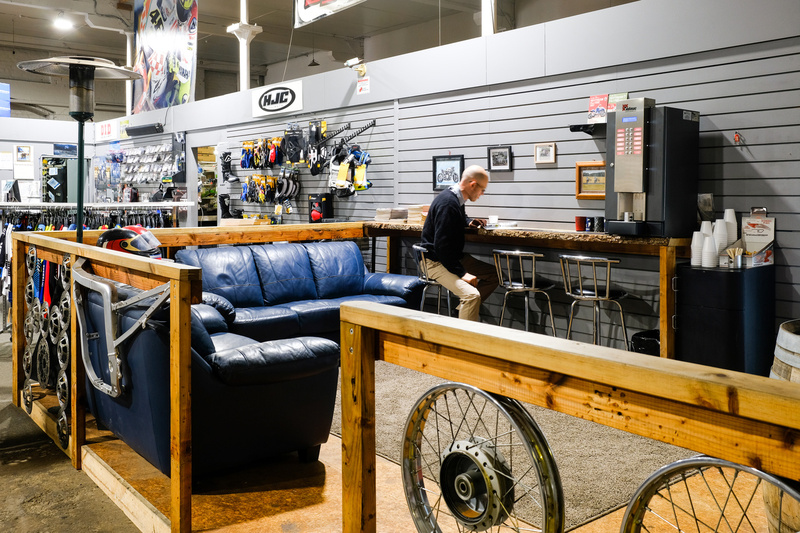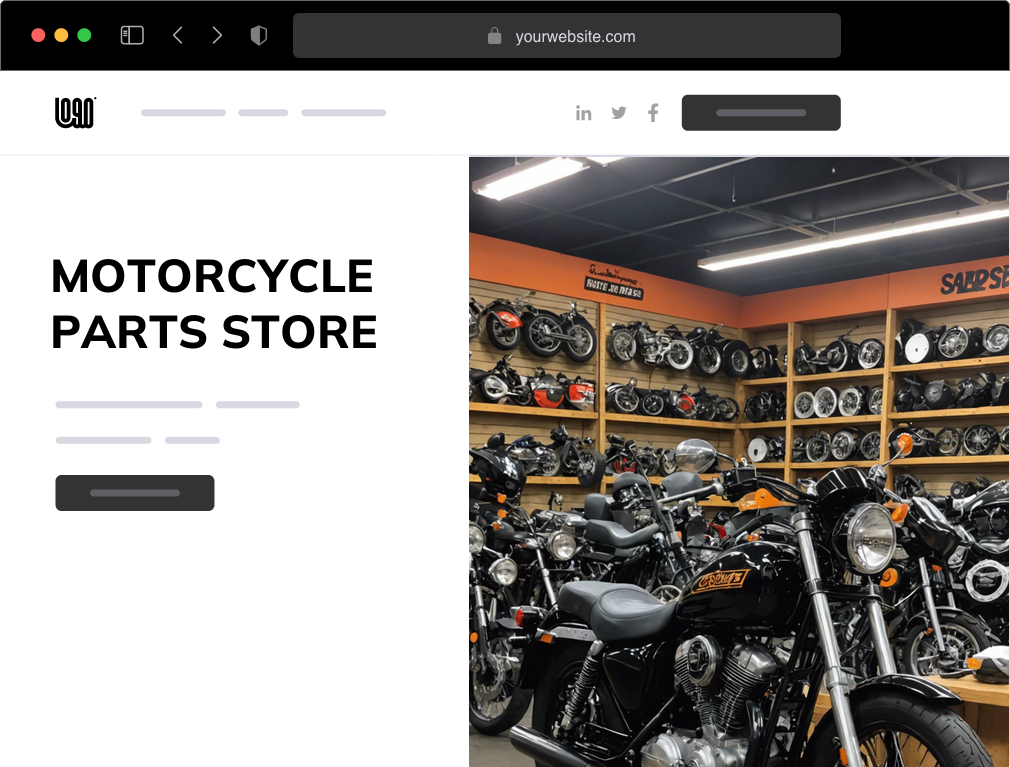Discover the most up to date Motocross Gear NZ for each Level of Rider
Discover the most up to date Motocross Gear NZ for each Level of Rider
Blog Article
Comprehending the Crucial Components of a Motorcycle: A Comprehensive Overview for Enthusiasts
For motorcycle lovers looking to boost their riding experience and ensure their bikes run efficiently, comprehending the necessary elements of a bike is paramount. Each aspect, from the engine's elaborate workings to the essential function of the stopping systems, not just impacts performance yet additionally safety and comfort.
Engine Parts

The camshaft plays a crucial duty in regulating the timing of the engine's shutoffs, making sure the exact opening and closing essential for reliable fuel and air consumption, as well as exhaust expulsion. This timing is critical to maintaining optimum engine performance and effectiveness. Furthermore, the carburetor or fuel injection system, relying on the bike model, is accountable for mixing air with gas in the right proportion for combustion.
The air conditioning system, either air or liquid-based, works to preserve the engine's temperature level within functional restrictions, preventing getting too hot and ensuring durability - motox parts nz. Each component, meticulously designed and integrated, contributes to the smooth operation of the engine, defining the motorcycle's power result and overall efficiency
Transmission System
Important to the motorcycle's performance, the transmission system guarantees effective power transfer from the engine to the wheels. This system makes up numerous vital components, consisting of the clutch, gearbox, and last drive, each playing a vital function in translating the engine's power into movement. The clutch, commonly run by a hand bar, serves to engage and disengage the engine from the transmission, permitting smooth gear adjustments and regulated velocity.
The gearbox, frequently described as the transmission appropriate, includes a collection of gears that bikers can manually shift with to readjust the bike's rate and torque result. These gears are set up in a series that makes it possible for the bike to speed up efficiently and preserve ideal engine efficiency throughout various rates. Most motorbikes make use of a sequential transmission, calling for the biker to change equipments in a predetermined order.
Braking Devices
While recognizing the transmission system is vital to using a bike's power, equally crucial is the capacity to manage and quit that power properly, which is where braking systems enter into play. Brakes are vital for security and efficiency, providing the rider with the required control to browse various surfaces and problems. Generally, motorcycles include two kinds of braking systems: disc brakes and drum brakes.
Disc brakes are much more common in contemporary motorcycles due to their remarkable performance. This system offers better warmth dissipation, consistent efficiency, and boosted stopping power, especially in wet problems.
On the other hand, drum brakes, though much less usual, are still found in some bikes. They function by pushing brake footwear versus the inner surface area of a drum attached to the wheel. While usually less reliable in warmth dissipation and quiting power, drum brakes are less complex and more economical.
Understanding these braking systems' nuances allows visit this page motorcyclists to keep their bikes properly and appreciate the design that guarantees reliable and risk-free stopping.
Suspension and Steering
Suspension and steering systems are important parts that substantially affect a bike's handling and ride comfort. The suspension system, containing forks at the front and shock absorbers at the rear, absorbs roadway irregularities, boosting security and control. Front forks, usually telescopic or upside down, compress and rebound to minimize impacts, while back shock absorbers preserve tire contact with the roadway, crucial for grip and security.
Guiding, focused around the handlebars, links the cyclist to the bike's directional control. The steering head bearings guarantee smooth procedure, enabling accurate ability to move. Proper positioning and maintenance of these bearings are important for predictable steering action and reducing rider exhaustion.
The suspension's adjustability is another vital element; preload, damping, and rebound setups enable modification to fit different riding designs and problems. This adaptability is necessary for enhancing performance, whether browsing urban streets or dealing with tough tracks. Technologies like electronic shock absorber supply real-time adjustments, improving adventure high quality throughout diverse terrains.

Electrical Systems
After making sure a smooth and regulated ride with reliable suspension and steering systems, interest transforms to the electric systems, a pivotal facet of contemporary motorcycles. These systems play a aftermarket bike parts vital function not only in beginning the engine yet additionally in powering numerous components that improve the functionality and security of the bike.
At the heart of a motorbike's electrical system is the battery, which stores electrical power required for beginning the engine and powering complementary systems - motocross parts nz. The generator or generator, coupled with the rectifier-regulator, makes sure the battery continues to be billed while the motorbike is in operation, converting mechanical energy into electric energy and preserving voltage levels
The ignition system, one more essential component, is liable for firing up the air-fuel mixture in the engine's cyndrical tubes. Modern motorbikes typically use an electronic ignition system, supplying greater efficiency and dependability compared to standard systems.
Illumination systems, consisting of headlights, tail lights, and indicators, are also vital, making certain visibility and security for the rider. Extra digital components such as sensors, control units, and displays contribute to advanced functions like gas shot monitoring, anti-lock braking systems (ABS), and digital control panels, further boosting the riding experience.
Verdict
An Click Here extensive understanding of a bike's crucial components, consisting of the engine, transmission system, stopping devices, suspension, steering, and electric systems, is crucial for fanatics intending to enhance performance, safety and security, and convenience. Mastery of these aspects permits informed decisions concerning maintenance and upgrades, inevitably boosting the riding experience. By integrating this expertise, cyclists can ensure their motorbikes operate at peak effectiveness and reliability, thus optimizing both pleasure and longevity of their automobiles.
For bike enthusiasts looking to boost their riding experience and guarantee their bikes run smoothly, understanding the important components of a bike is critical.Indispensable to the motorbike's functionality, the transmission system makes certain efficient power transfer from the engine to the wheels.While understanding the transmission system is vital to taking advantage of a motorcycle's power, equally essential is the capacity to regulate and stop that power successfully, which is where stopping mechanisms come right into play. Generally, motorcycles include 2 kinds of stopping systems: disc brakes and drum brakes.
A thorough comprehension of a bike's vital components, including the engine, transmission system, braking systems, suspension, steering, and electrical systems, is indispensable for fanatics aiming to enhance safety, comfort, and efficiency.
Report this page